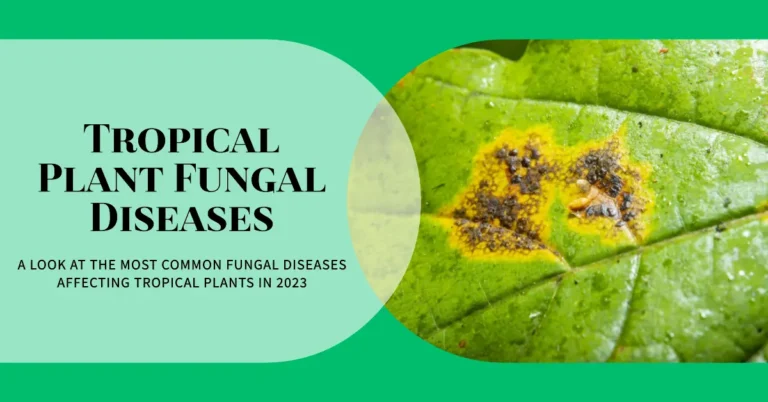Fertilizing Ferns
The Comprehensive Guide to Fertilizing Ferns

Discover the secrets of fertilizing ferns and unravel the mysteries of their nutrient needs to foster a healthy growth environment.
Identifying Nutrient Deficiencies in Ferns
Your ferns communicate their needs through their leaves and growth patterns. Being able to read these signals will put you a step ahead in fertilizing ferns effectively.
- Pale Green or Yellowish Leaves – Indicates a possible nitrogen deficiency. Nitrogen is vital for healthy leaf development.
- Stunted Growth – This could point towards a lack of potassium, essential for robust growth.
- Brown Edges and Spotty Young Leaves – A sign that your fern might be craving more magnesium.
Keep in mind it’s almost like being a detective; every symptom gives a clue to what your fern might need more of in terms of nutrients.
Macronutrients and Micronutrients: The Balancing Act of Fertilizing Ferns
Fertilizing ferns requires a careful balance between macronutrients and micronutrients. Here’s a quick breakdown:
- Macronutrients
- Nitrogen (N)
- Phosphorus (P) – Great for promoting healthy root systems.
- Potassium (K)
- Micronutrients
- Iron (Fe)
- Magnesium (Mg)
- Zinc (Zn)
- …and more.
These elements each play a unique role in the lifecycle of ferns, collaborating to promote healthy, vibrant growth.
Caution: Avoid Over-Fertilizing Ferns
Before you rush off to buy fertilizers, take a moment to consider other factors that might be influencing your fern’s health, including:
- Light exposure
- Water quality
Remember, fertilizing ferns isn’t a one-size-fits-all solution, as different species might require different nutrients in varying quantities.
Developing a Tailored Plan for Fertilizing Your Ferns
The first step to success is understanding that fertilizing ferns is more of an art than a science. Create a nurturing environment for your ferns by considering all possible causes of distress before taking action.
Top Tip: Always research the specific nutrient needs of the fern species you are caring for to avoid common pitfalls in fertilizing ferns.
By taking a thoughtful approach to fertilizing ferns, you’ll be well on your way to nurturing a lush, healthy garden of ferns that are a joy to behold. Remember, the journey of fertilizing ferns is continuous, with each day offering a new learning opportunity. Happy gardening!
Selecting the Right Fertilizer for Your Ferns
Choosing the right fertilizer for your ferns can feel like a daunting task, especially with all the options available out there. But don’t worry! It’s actually easier than you think. The first thing to keep in mind is that ferns generally prefer a balanced fertilizer – one that has equal amounts of nitrogen (N), phosphorus (P), and potassium (K). This is often represented as a 20-20-20 ratio on fertilizer packaging.
Now, you might be wondering why these three elements are so important. Well, nitrogen promotes lush green growth, which is essential for those beautiful fronds we all love. Phosphorus helps develop strong root systems and aids in nutrient uptake while potassium plays an integral role in overall plant health by helping regulate water and nutrient movement within the fern itself. So when shopping around for fertilizers, look out for ones labeled with this 20-20-20 ratio.
But hey, remember not to get too hung up on numbers alone because other factors matter too.
For instance, consider whether the product contains micronutrients such as iron or magnesium which are also beneficial to ferns. You should also consider how easy it will be for you to apply the fertilizer – granular types tend to be less messy than liquid forms but may require more effort during application since they need watering in afterwards.
The Ideal Time to Fertilize Your Ferns
Ferns, like all plants, have a natural growth cycle, and there are certain times when they can benefit from an extra nutritional boost. Most fern varieties experience their peak growth period during the spring and early summer months. This is generally the best time to start fertilizing your ferns as it aligns with their active growing phase. Providing them with the necessary nutrients at this stage helps them grow more robustly and produce lush green fronds.
When you’re deciding on the frequency of fertilization, consider factors like your fern’s specific variety, its overall health status, and the type of soil in which it’s planted. A good rule of thumb for most types of ferns is to feed them every 4-6 weeks during their active growing season (spring through early fall).
In contrast, during winter months or dormant periods – hold off on fertilizer application since overfeeding could potentially harm your plant instead of helping it thrive.
It’s also important not to rush into fertilizing newly planted or transplanted ferns right away. Give these plants time to adjust to their new environment before introducing any additional nutrients into their system. Typically waiting about a month after planting before starting a regular feeding routine works well for many varieties of ferns. Remember that patience is key here – healthy plant growth takes time!
Decoding the Fertilizer Ratio for Ferns
Understanding the fertilizer ratio for your ferns is like cracking a secret code. It’s not as daunting as it sounds, though! You’ve probably noticed three numbers on every bag of fertilizer you have ever bought. These numbers represent the percentage of nitrogen (N), phosphorous (P), and potassium (K) in that order. This is often referred to as the N-P-K ratio.
Now, why are these elements important? Well, Nitrogen promotes lush green growth, Phosphorus aids in root development and flowering and Potassium strengthens plants and helps them resist diseases. But here’s where things get interesting – ferns don’t flower or produce fruit, so they need less phosphorus compared to other plants. So when choosing a fertilizer for your ferns, look for one with an N-P-K ratio where N & K values are higher than P.
But remember, folks, more isn’t always better! Using too much high-nitrogen fertilizer can lead to excessively fast growth, which may weaken the plant overall. Similarly, excessive potassium could interfere with the absorption of other nutrients like magnesium and calcium, causing nutrient imbalance.
So what’s our takeaway from this? While decoding the N-P-K ratios might seem complex initially, once you understand how each element impacts your plant’s health, selecting the right kind of fertilizers becomes easier, ensuring happy, healthy ferns at home!
The Step-by-Step Guide to Applying Fertilizer to Ferns
Before you start the fertilizing process, having all your materials at hand is crucial. You’ll need a good quality fern fertilizer, preferably slow-release granules or water-soluble types. A watering can or hose with a gentle spray setting is also essential for evenly distributing the fertilizer and avoiding damage to the delicate fronds of your ferns. Don’t forget about safety gear such as gloves and goggles – these may seem excessive but remember that most fertilizers contain chemicals that can be harmful if they come into contact with skin or eyes.
The actual application process is pretty straightforward. Start by reading the instructions on your chosen fertilizer package carefully – different products have different concentrations and therefore require different amounts per plant. Once you’ve determined how much fertilizer each of your ferns needs, sprinkle it evenly around the base of each plant, taking care not to let any granules touch the fronds themselves, as this could cause burning or discoloration. After applying the fertilizer, water thoroughly so that it starts to dissolve and seep into the soil where it will be accessible to the roots.
Remember that while fertilizing is important for healthy growth in ferns, too much can do more harm than good! Keep an eye out for signs of overfertilization, such as yellowing leaves or slowed growth rates – if you notice these symptoms, consider reducing your feeding schedule accordingly. Also, keep in mind environmental factors like temperature and light levels when determining how often to feed; during warmer months when plants are actively growing, they’ll likely benefit from more frequent applications compared to cooler periods when their metabolism slows down.
Fertilizer and Watering: Striking the Right Balance
Watering and fertilizing ferns go hand in hand. Just like you can’t have pancakes without syrup, your ferns can’t thrive without the right balance of water and fertilizer. It’s all about finding that sweet spot where your plants are getting just enough nutrients from the fertilizer, but not so much that they’re drowning in it.
Let’s think about this for a moment – too little water and your fern will dry out, making it impossible for the plant to absorb any nutrients from the soil or fertilizer. On the other hand, if you overwater your plant while also feeding it excessive amounts of fertilizer, you might end up with root rot due to nutrient burn, a situation as unpleasant as soggy pancakes!
Striking this balance is more art than science. You need to pay attention to how your fern reacts after watering and fertilizing schedules. Are their leaves lush green or turning yellow? Is there new growth or does everything seem stagnant? Remember, each type of fern may require different care so keep an eye on them individually rather than adopting a one-size-fits-all approach!
Here are some tips to help you strike the right balance between watering and fertilizing your ferns:
• Always observe your plants after each watering or fertilization session. Are they showing signs of distress, like yellowing leaves or stunted growth? If so, it might be time to adjust your routine.
• Remember that different types of ferns have different needs. Some may require more water than others, while some may need less fertilizer. Do some research on the type of fern you’re caring for to ensure you’re providing it with everything it needs.
• Be mindful not to overwater your plants. Too much water can lead to root rot, which is as bad for plants as drowning is for humans!
• Similarly, don’t go overboard with the fertilizer either. While nutrients are essential for plant growth, too much can cause nutrient burn – a condition that’s just as harmful as undernourishment.
• Consider using a slow-release fertilizer instead of applying large amounts at once. This way, your plant gets a steady supply of nutrients without being overwhelmed.
Striking the right balance between watering and fertilizing isn’t always easy but remember: patience is key! With careful observation and adjustment based on what works best for each individual plant in your care – you’ll soon master this delicate art!
Preventing Overfertilization: Signs and Solutions
Overfertilization of ferns is a common mistake that can lead to some serious problems for your green buddies. It’s like overeating, you know? Too much of anything isn’t good. Ferns are generally light feeders and don’t require as much fertilizer as other plants might. So, if you see signs such as yellowing leaves or brown leaf tips, it could be an indication that they’re getting more food than they need.
Now let’s talk about solutions. The first step in preventing overfertilization is to understand the nutritional needs of your ferns and use the right amount of fertilizer accordingly. If you’ve already overdone it, though, don’t panic! You can still save your plant by flushing out the excess nutrients with water – this process is called leaching. Just make sure not to do this too often, as it can wash away essential nutrients from the soil.
Another way to prevent overfertilization is to use organic fertilizers instead of chemical ones because they release nutrients slowly into the soil, reducing the chances of nutrient overload for your ferns. Also, remember, less is often more when it comes to feeding these delicate beauties, so always start with small amounts and adjust according to their response.
Organic Alternatives to Chemical Fertilizers for Ferns
If you’re not keen on using chemical fertilizers for your ferns, there are several organic alternatives that can provide the nutrients your plants need. Compost is one of these options. Made from decomposed organic matter like vegetable scraps and grass clippings, compost enriches the soil by improving its structure and providing a slow-release source of essential nutrients. Plus, it’s an excellent way to recycle kitchen waste!
Another fantastic option is worm castings or vermicompost. These are rich in nitrogen, phosphorus, potassium, and other micronutrients that ferns love! Worm castings also improve soil structure and help retain moisture – something that ferns really appreciate. You can buy worm castings or set up a small-scale farm at home.
Fish emulsion is yet another organic alternative you might consider for feeding your ferns. Derived from processed fish waste, this fertilizer offers high amounts of nitrogen along with other important minerals such as phosphorous and potassium. It’s easy to use, too; just dilute it with water according to package instructions before applying it to the plant’s base.
Fertilizing Indoor Ferns Vs. Outdoor Ferns: Differences to Keep in Mind
Indoor and outdoor ferns, while similar in many ways, have distinct nutritional needs that you need to consider when fertilizing. Indoor ferns are typically grown in pots or hanging baskets with limited soil volume and thus may require more frequent feeding compared to their outdoor counterparts. This is because nutrients can be quickly depleted from the potting mix due to regular watering. However, it’s essential not to overdo it – too much fertilizer can lead to salt buildup, harming your indoor ferns.
On the flip side, outdoor ferns generally grow in garden beds where they have access to a larger volume of soil packed with natural nutrients. They are also exposed directly to rainwater which naturally washes away excess salts from the soil surface, preventing any potential toxicity issues caused by over-fertilization. These types of ferns still appreciate an extra boost during their growing season (spring through early fall). A balanced slow-release granular fertilizer applied at this time will keep them lush and vibrant.
Remember, regardless of whether your fern is indoors or outdoors, always water thoroughly after applying any fertilizer. This helps distribute the nutrients evenly throughout the root zone ensuring all parts of your plant get fed equally well! And remember – moderation is key; even plants don’t like junk food every day! So stick with a consistent schedule rather than sporadic heavy feedings for best results.
The Role of Fertilizer in the Overall Care of Ferns
Fertilizer plays a crucial role in the overall care of ferns. It’s like the vitamins and minerals we take to supplement our diets. Like other plants, ferns need certain nutrients to thrive and grow healthily. These nutrients include nitrogen for leaf growth, phosphorus for root development, and potassium for overall plant health.
You might wonder why fertilizing is necessary if you regularly water your ferns. Well, think about it this way – water is like our basic food; it provides essential hydration but doesn’t necessarily contain all the nutrients we need. Similarly, while water aids in photosynthesis and keeps your fern hydrated, it may not provide all the required elements that are naturally found in soil.
That’s where fertilizer comes into play! A good quality fertilizer will replenish these missing nutrients ensuring that your fern remains healthy and vibrant. However, remember moderation is key here. Too much can be harmful! Just like overeating can cause problems, overfertilization can lead to ‘fertilizer burn’ or even kill your beloved plants. So use wisely, folks.

FAQs
What are the nutritional needs of ferns?
Ferns primarily require three nutrients for growth – nitrogen, phosphorus, and potassium. Nitrogen promotes lush foliage growth, phosphorus aids in root development, and potassium helps overall plant health.
How can I choose the right fertilizer for my ferns?
Look for a balanced fertilizer with equal amounts of nitrogen, phosphorus, and potassium. Ferns also appreciate trace elements like iron and magnesium, so a fertilizer that contains these can be beneficial.
When is the ideal time to fertilize ferns?
The best time to fertilize ferns is during the growing season, typically from early spring to late summer. It’s best to avoid fertilizing in the winter when the plant’s growth slows down.
What does the fertilizer ratio for ferns mean?
The fertilizer ratio refers to the percentage of nitrogen (N), phosphorus (P), and potassium (K) in the fertilizer. A balanced fertilizer will have a ratio like 20-20-20, meaning it contains equal amounts of each nutrient.
Can you guide me on how to apply fertilizer to my ferns?
Sure! First, dilute the fertilizer according to the package instructions. Then, water your ferns thoroughly before applying the fertilizer to avoid burning the roots. Distribute the fertilizer evenly around the base of the plant and water again to help it soak in.
How can I maintain a balance between fertilizing and watering my ferns?
Watering your ferns thoroughly both before and after applying fertilizer is essential. This helps to distribute the nutrients evenly and prevents the fertilizer from burning the plant’s roots.
What are the signs of overfertilization in ferns, and how can I fix this?
Signs of overfertilization include yellowing leaves, brown leaf tips, and slower growth. If you notice these symptoms, stop fertilizing and flush the soil with water to remove excess fertilizer.
What are some organic alternatives to chemical fertilizers for ferns?
Compost, worm castings, and seaweed extracts are all excellent organic alternatives to chemical fertilizers. They provide a wide range of nutrients and are gentle on the plant’s roots.
What differences should I keep in mind when fertilizing indoor versus outdoor ferns?
Due to slower growth rates, indoor ferns typically require less fertilizer than their outdoor counterparts. Also, remember that indoor ferns may also be more susceptible to overfertilization.
How does fertilizer play a role in the overall care of ferns?
Fertilizer provides the essential nutrients that ferns need to thrive. It can enhance foliage growth, promote root development, and improve the plant’s overall health. However, it’s crucial to use it correctly to prevent damage to the ferns.







